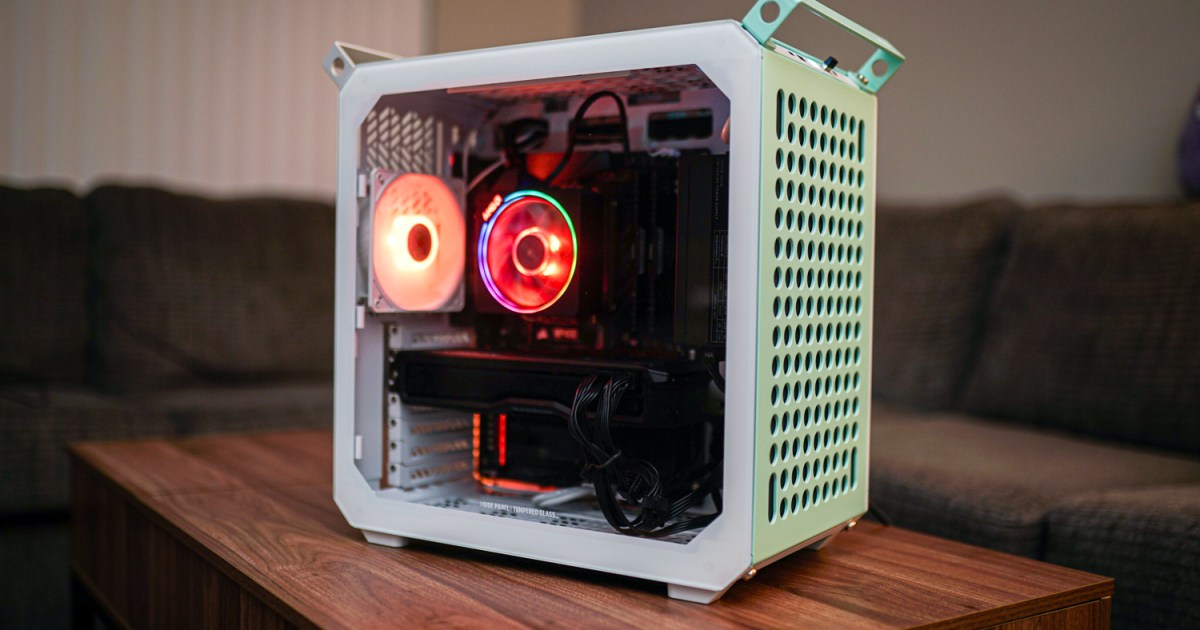If you’re building a PC from scratch, one of the most important things to consider is how your case is going to impact how hot your hardware gets. With how powerful most modern hardware is, the internals of a PC can get very hot, and one of the only ways you can deal with that heat is to pump as much air through your case. Even CPU and GPU radiators work on a similar principle, relying on good airflow over the cooling fins to keep temperatures down as the hardware does its best to turn your PC parts into molten metal.
Of course, there are dozens, if not hundreds, of different kinds of case designs coming from manufacturers, and it can be a bit hard to pick something that fits well for your needs. That’s why we’ve looked between all the best options and picked the best PC cases for airflow in various sizes, from full-tower ATX cases, to tiny Mini-ITX cases as well.
The Best PC Cases for Airflow
- Buy the
if you want the overall best PC case for airflow
- Buy the
if you want a budget PC case for airflow
- Buy the
if you want the best full-tower PC case for airflow
- Buy the
if you want the best Micro-ATX PC case for airflow
- Buy the
if you want the best mini-ITX case for airflow
NZXT H7 Flow
Best overall PC case for airflow
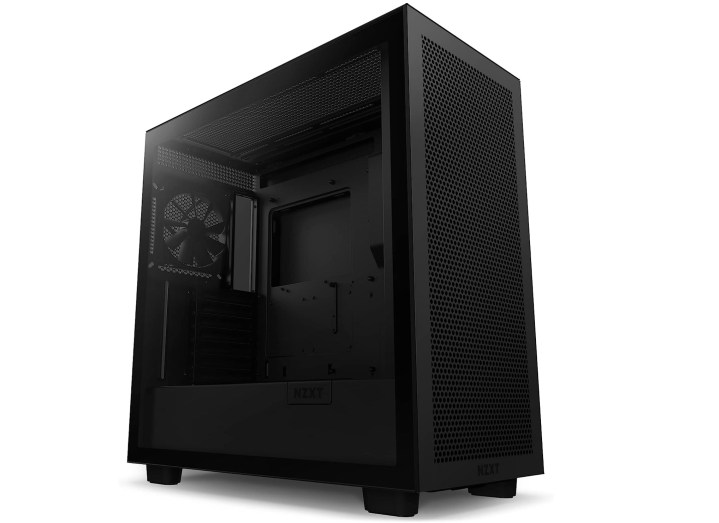
| Pros | Cons |
| Excellent cable-managent | A bit pricey |
| Understated design that works for any build | No reset buttons or enough ports on the front panel |
| Easy to work in |
One of the biggest problems when it comes to airflow is getting cables in the way of it, which is why good cable management is important. The NZXT H7 Flow is designed around this concept, with a lot of channels and spaces for you to run cables and tie them to places so you aren’t blocking the flow of fans from every side. NZXT has also made the top panel open so that you can also take advantage of having airflow going in or out an additional opening, as well as just having extra space for radiators.
Speaking of which, the NZXT can handle quite a lot of them. The front and the top of the case can accept up to 360mm radiators, which is more than you probably need, so if you want to go for more fans, the front panel can also fit three 140mm fans if you want to go that route. You also get two NZXT F Series fans that come with the case, so you can save a bit on that, although if you’re looking to increase your performance, you’ll likely be getting some third-party ones.
One thing to keep in mind, though, is that this is a very minimal design, which means you don’t get a lot of stuff for the I/O panel, just two USB-A and one USB-C port, and that’s it. Now, that’s necessarily a dealbreaker, but it is something to consider if you need to plug in a lot of stuff in the front of the PC.
| Specifications | |
|---|---|
| Case Type |
Mid-Tower |
| Motherboard compatibility | ATX |
| Included Fans | Two |
| Dimensions | 20.08 x 10.83 x 20 inches |
| Weight |
18 pounds |
Cooler Master MasterBox NR600
Best budget PC case for airflow
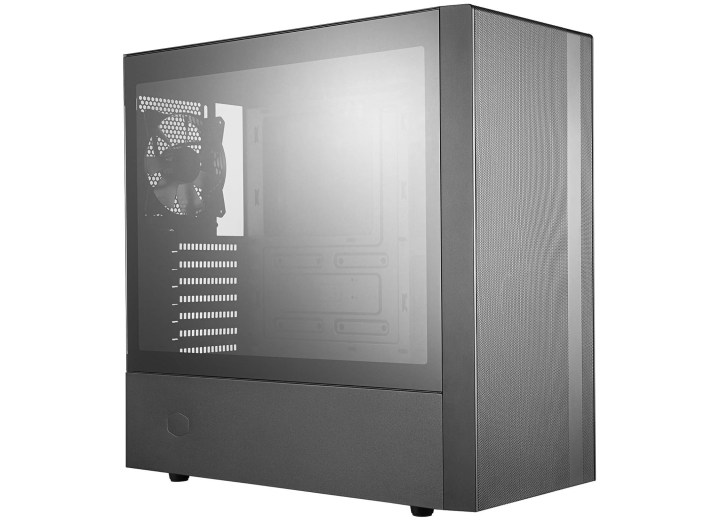
| Pros | Cons |
| Budget-friendly | Doesn’t have a lot of cable management options |
| Can fit a lot of fans | No reset button and too few ports on the front panel |
| Minimal design aesthetic |
While it’s not always easy to find a budget-friendly case that also has good airflow, the Cooler Master MasterBox NR600 does a relatively good job of it. It doesn’t have a good cable management system, which is certainly a shame, but it does have a top and front opening, which gives you a lot more airflow. That said, these are mesh openings, and there has been some anecdotal evidence that mesh screens disrupt airflow to some extent, although they do also help decrease the amount of dust that is sucked up into the computer, so it’s very much a matter of compromise.
Either way, you have a lot of airflow openings to work with, and in terms of radiators, you can fit two of them: up to 280mm in the front panel, up to 240mm on the top panel, and a 120mm one in the back which is often used for the CPU but will be a tight fit. You can also fit two 140mm fans or three 120mm fans in the front panel and either two 140mm or two 120mm fans on the top panel. So, theoretically, you could have up to six fans if you include the 120mm fan in the back panel.
As for what hardware it can fit inside, well, it can do both a Micro-ATX and ATX motherboard, a PSU with a maximum length of 180mm, and a GPU with a maximum length of 410mm. It’s very important that you double-check those last two dimensions because there’s nothing worse than buying something and not being able to fit it in a case, which is true with mid-towers like this one and smaller.
| Specifications | |
|---|---|
| Case Type | Mid-Tower |
| Motherboard compatibility | ATX |
| Included Fans | Two |
| Dimensions | 18.81 x 8.23 x 18.63 inches |
| Weight |
15 pounds |
Corsair 7000D Airflow
Best full-tower PC case for airflow
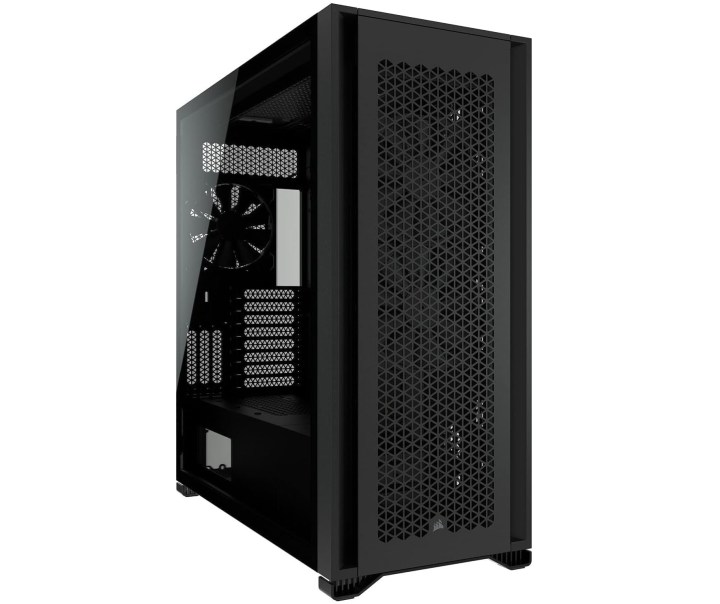
| Pros | Cons |
| Can hold a lot of fans and radiators | Very heavy and awkward to maneuver |
| Fits large GPUs | Expensive |
| Easier to build things inside |
The Corsair 7000D Airflow is a full-tower case, which means that it can essentially fit pretty much any type of hardware that you could think of. For example, it has a 450mm GPU length limit, which should even clear larger GPUs like the RTX 4090, although different models have different sizes, so it’s always good to double-check. The Corsair 7000D can also take a CPU cooler with 190mm, which is actually quite impressive and more than enough, especially if you plan to go for a liquid cooling option.
One of the most impressive things about its size is that it can accommodate up to 12 fans, which is a mind-boggling number and means that you could potentially fit three 360mm radiators in the case, although we’re not quite sure what you’d do with all that cooling. You could also go for a single 480mm radiator on the front panel, which would be perfect for a high-end GPU like the RTX 4090, and the top panel up to a 420mm radiator, another good option for cooling a high-end GPU. As for the back panel, it can take either a 120mm or 140mm fan and an equally sized radiator, so it’s a good option for cooling a CPU.
Of course, there are certain downsides when dealing with a case so large, with the main one being that it’s big and unwieldy, so it can be hard to maneuver, especially if you need to lift it up. That’s because it weighs an eye-watering 41.2 pounds, so you should absolutely have somebody helping you with this because it’s not going to be an easy build. Ultimately though, that is the price of having so much internal space, and for a lot of folks, it’s well worth that extra effort.
| Specifications | |
|---|---|
| Case Type | Full Tower |
| Motherboard compatibility | ATX |
| Included Fans | Three |
| Dimensions | 21.65 x 9.76 x 23.62 inches |
| Weight |
41.2 pounds |
Lian Li Lancool 205M
Best Micro-ATX PC case for airflow
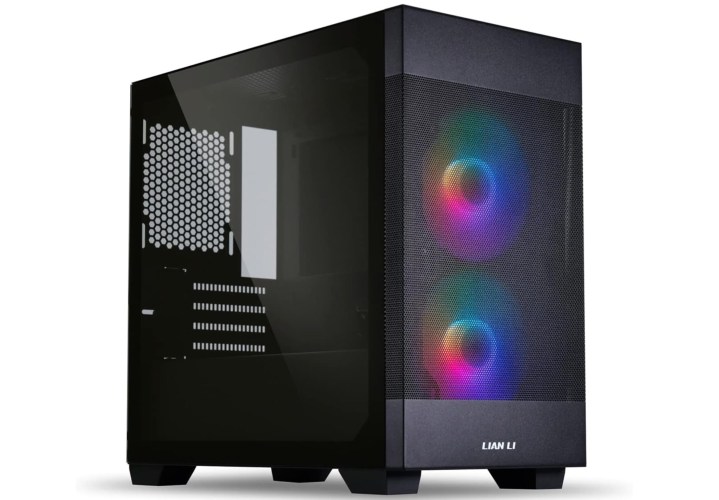
| Pros | Cons |
| Can fit larger GPUs | Small build space |
| Small and easy to maneuver | Can’t fit a radiator in the back panel. |
| Can take Mini-ATX motherboards |
If you have issues with space and don’t really know where to put your PC, then going with a Micro ATX case is an excellent option. While this smaller form factor gives you a lot more placement options, it does somewhat hamper the sort of hardware you can fit inside. For example, you can only fit a Micro ATX or Mini ATX motherboard in here, so you need to take that into account. You also only get 375mm of GPU clearance, so some of the bigger GPUs will have a hard time here.
On the other hand, you do have some good options, such as the ability to fit up to a 240mm radiator on either the top or front panel. You could potentially do both, but that’s going to be difficult to fit in all the tubing, and you probably don’t need two big ones anyway. The back panel can fit a 120mm fan but not a radiator, so if you plan to cool both your GPU and your CPU, you’ll likely have to make some combination of top and front panel radiators of various sizes.
As for cable management, there are spots behind the motherboard for them, which is good since the case is so small you’re going to need somewhere to put the cables. The bottom panel where the PSU goes is also removable so that you can reach things a bit easier, although again, the smaller space does make it difficult to do some stuff.
| Specifications | |
|---|---|
| Case Type | Micro Tower |
| Motherboard compatibility | Micro ATX |
| Included Fans | Three |
| Dimensions | 15.85 x 8.27 x 15.75 inches |
| Weight |
15.5 pounds |
Cooler Master NR200P MAX
Best Mini-ITX PC case for airflow
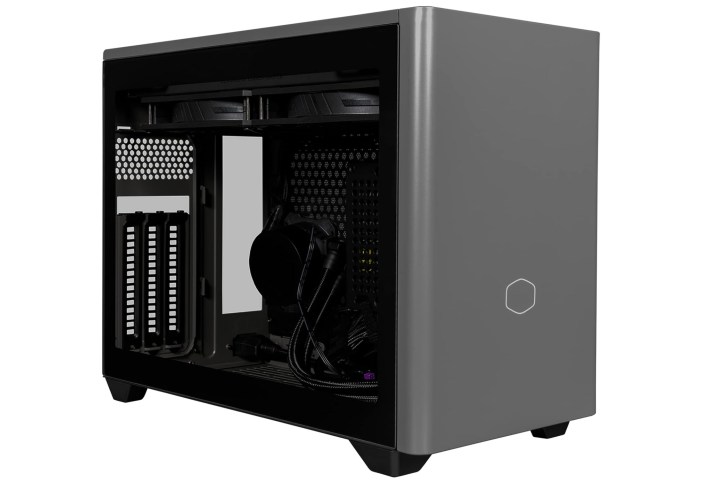
| Pros | Cons |
| Comes with a custom PCU and Radiator | Pre-installed hardware gives you fewer options |
| Minimalist design fits anywhere | Can only fit GPUs up to 336mm |
The Cooler Master NR200P MAX is a bit different than your average case because it already comes with some things pre-installed, which also helps explain the higher price. For starters, it has it’s own 850w 80 Plus Gold PSU that also has its own custom-made cables. Cooler Master did this because the case is so small that you’re not going to be able to fit a traditional PSU, so having something custom-made that’s smaller and accounted for in the internal space makes a lot of sense.
Another thing the NR200P MAX has pre-installed is a 280mm radiator with two 140mm fans, with all the tubing already pre-made for you. In this case, it’s specifically an SFX CPU cooler, so if you were planning to cool a GPU with a radiator, you’d have to remove the pre-installed one and do your own. However, cooling the CPU will be nearly impossible since you can’t put a radiator anywhere else, and the CPU sits below the GPU, so this isn’t really the case for liquid cooling a GPU. Luckily, the airflow is still pretty good, even for a smaller case, and the GPU you can fit in there probably won’t cause that many issues since there’s only a 336mm length clearance and a 140mm height clearance.
Yeah, it’s a tiny case, but that’s part of its charm. It will be a bit harder to work with, especially given the pre-installed hardware, but you can, thankfully, remove all the panels to gain easier 360-degree access. Also, the GPU has a riser you can use that puts it on a hinge so you can swing it in and out for easier access. Of course, the important thing to remember is that this only takes Mini-ITX motherboards, so be sure to pick something that fits your needs since most Mini-ITX boards have fewer PCI-e and RAM slots.
| Specifications | |
|---|---|
| Case Type | Mini Tower |
| Motherboard compatibility | Mini-ITX |
| Included Fans | Two |
| Dimensions | 14.84 x 7.28 x 11.49 inches |
| Weight |
16.98 pounds (with PSU and Radiator) |
How We Chose These PC Cases for Airflow
Case Design
It’s probably not a surprise to hear that the way the case is designed, in terms of the number of openings and their positions, can greatly affect airflow quality. Beyond just placement, having mounting spots for more fans or radiators also makes the case easier to customize around your hardware, which can be difficult the smaller the case gets. Either way, we did our best to focus on cases that had as many openings and mounting spots for fans and radiators, and that includes some gargantuan 480mm radiators as well. You might not end up needing that, but having the option is always nice.
Also, one more thing to note is that case sizes correlate with the type of motherboard they can fit, which in turn will decide what sort of hardware you can use, except for the GPU and CPU cooler, both of which are constrained by internal sizing. Either way, the larger cases will usually be able to fit the smaller motherboards since it’s easy for manufacturers to add the screw holes for smaller sizes. We mention this because it does give you a bit more build options if you want to fit a smaller motherboard in a larger case, especially if you already have one, but it’s always good to double-check that it can handle it so that you don’t waste your money.
Cable Management
While there’s no clear scientific consensus on the matter, and case manufacturers don’t really release their research, there has been a lot of anecdotal evidence that bad cable management can impact airflow just as much as the case design. It sort of makes sense when you think about it because the more hanging and random cables you have, the more difficult it is for air to find pathways through the case from one side and out the other. It may not seem like much, but when your heat dissipation is a function of how fast you can dump air into and out of a case, it starts to add up. That’s why we’ve done our best to pick cases that take cable management into account, with the only exception being the budget option, which still has a good case design regardless.
This article is managed and created separately from the Digital Trends Editorial team.
Editors’ Recommendations
